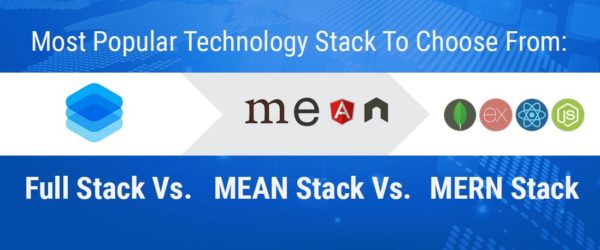What is DevOps?
What exactly is DevOps? DevOps (a portmanteau of “technology” and “operations”) is a mixture of strategies and techniques designed to improve the capacity of an enterprise to produce applications and services more efficiently than conventional methods of software technology. This pace helps companies to represent their customers better and perform more successfully in the market.
Simply put, DevOps is about eliminating obstacles, growth, and operations, between typically siloed teams. Technology and operations teams work together under a DevOps model through the entire life cycle of software applications, from development and testing to delivery through to operations.
DevOps Benefits
- Velocity. DevOps practices allow you to operate at the pace you need to innovate faster, respond better to evolving markets, and become more effective in driving business outcomes.
- Rapid delivery. You can improve the product faster and develop a competitive advantage by rising the speed of launches.
- Reliability. DevOps techniques such as continuous management and continuous deployment will ensure the consistency of code upgrades and improvements in infrastructure so that you can execute efficiently at a quicker pace while retaining an optimal end-user experience.
- Improved collaboration. Developers and operations teams collaborate under a DevOps model, share tasks, and merge their workflows. It cuts down on inefficiencies and saves money.
- Security. You may follow a DevOps model using automated, integrated security testing tools without compromising protection.
DevOps Security, and DevSecOps
DevOps Protection, more commonly known as DevSecOps, refers to the methodology and practice of protecting the entire DevOps system by techniques, policies, procedures , and technology. DevSecOps philosophy is that protection should be integrated into any aspect of the DevOps life cycle, including beginning, planning , developing, reviewing, launching, supporting, maintaining and more.
Traditional security works from the perspective that the security vulnerabilities can then be identified and corrected before release once a program has been built. Traditional security techniques arise too late in the development process with the transition to a DevOps model, and are too slow to design and release iteration-built applications. Thus, they can become a huge roadblock for timely delivery of applications and services.
For DevSecOps, safety is becoming everyone’s priority on a DevOps team. DevSecOps strives to execute safety decisions at both speed and scale without compromising protection. DevSecOps includes continuous, flexible collaboration among release engineers and security teams. The principles of “delivery speed” and “building safe code” merge into one streamlined operation. Safety monitoring is conducted in iterations without extending the delivery cycles. Important security problems are dealt with as they become clear, not until there has been danger or a compromise.
How to find the best Tools for DevOps
DevOps activities rely on powerful resources to allow teams to deploy and evolve for their clients quickly and efficiently. Such tools can automate manual activities, help teams navigate dynamic on-scale environments, and keep engineers in charge of the DevOps high-velocity speed.
The DevOps process is composed of phases:
- Planning the next phase of the product evolution
- Develop the Code.
- Testing and implementation in the production setting.
- Giving updates to the user.
- Computer Performance Monitoring and Logging.
- Get input from customers.
Planning. Schedule preparation and task monitoring tools are needed to ensure that the DevOps team knows what tasks are at hand, what is being accomplished at the moment, and whether there is any chance of falling behind schedule. Tools such as Confluence and Jira help DevOps teams achieve a smooth and productive project management process, ensuring timely delivery of goods.
The building, and distribution. Developers need fast production and testing environments to deploy and can’t wait long for fixes when something goes wrong. Docker containerization maintains continuity across multiple creations and release cycles and offers repeatable environments for development, design, testing, and output. In this process, other common tools include Kubernetes, Terraform, Chef, Ansible, and Puppet.
Tests. Look for tools like Jenkins, CircleCI, and GitLab CI to help reduce the time and energy spent testing without compromising the quality of the code or the user experience.
Supervising and logging applications. When software is transferred to production, it needs to be regulated to ensure consistent performance and customer satisfaction is improved. This stage also includes performance monitoring and recording, raising smart warnings about various problems, collecting input from customers, and so on. Those applications include Prometheus, Grafana, Elastic (ELK) Stack, Splunk, and Sumo Logic.
DevOps methodologies
DevOps is the direct descendant of agile software development, born out of the need to keep up with the accelerated speed of software development and agile methods of throughput. Advances in agile technology have demonstrated the need for a more comprehensive approach to the life-cycle of software delivery, leading to DevOps.
“Agile development” is the umbrella term for many methodologies of iterative software development, several of which have been moved to DevOps:
Scrum — a system through which people can solve complex adaptive challenges when providing the highest possible value of goods.
Kanban — a strategy for handling product creation with a focus on quality production, while not overburdening the development team. Like with Scrum, Kanban is a framework designed to help teams work more efficiently together.
Scaled Agile Framework (SAFe)—a collection of organizational principles and workflows designed to assist companies in scaling lean and agile practices. SAFe is one of an increasing number of frameworks aimed at solving the problems faced when scaling beyond a single team.
Extreme programming(XP)— a technique for software development intended to enhance the product quality and sensitivity to changing consumer needs. XP supports regular launches in short development cycles, with the goal of increasing efficiency and adding checkpoints where new customer specifications can be implemented. Other extreme programming elements include pair programming or comprehensive code review, unit testing of all code, not programming features until they are required, a flat management structure, code simplicity, and clarification, anticipating changes in customer requirements as time goes by and the problem is better understood, and regular customer contact.
Functions and benefits of the DevOps methods and processes.
Various key strategies will allow companies to evolve more rapidly by automating and streamlining the software development process. One basic principle in DevOps is to make very regular yet minor changes. Typically these changes are more gradual than the changes performed under standard release practices. Organizations that use a DevOps model deliver updates much more often than organizations that use conventional software development practice.
Communication and communication are essential components of the DevOps system of activities. Code delivery process automation facilitates cooperation by physically pooling the technology and operations workflows and responsibilities. Communication between developers, management, and even other departments, such as sales and marketing, allows all aspects of the company to work more closely with priorities and projects.
DevOps practices like continuous integration and ongoing delivery allow DevOps teams to deliver easily, safely, and reliably. Monitoring and logging help DevOps teams monitor application output so they can respond to issues quickly.
Microservices
The architecture of microservices is a design method that builds a single application as a series of small services. Through service runs in its way and uses a lightweight mechanism to communicate with other services via a well-specified interface. To write microservices and deploy them individually, as a single service, or as a group of services, you can use different frameworks or programming languages.
Organizations can also use the architecture of microservices to make their systems more versatile and allow for faster innovation. Every service is usually paired with a small, agile team that takes ownership of the service.
Continuous integration and continuous delivery
DevOps practices like CI / CD allow the DevOps teams to deliver quickly, securely, and reliably. CI is a method in software development in which developers periodically merge their code changes into a central repository, followed by automated construction and testing. CI’s main goals are to detect and address bugs faster, boost the consistency of the software, and reduce the time it takes to test and deliver new software updates. The CD builds on CI by applying all code changes after the build stage to a test or production environment.
Monitoring and logging
Through recording and reviewing application-generated logs, DevOps teams can better understand how users may be impacted through software changes or updates.
Establishing a stable DevOps model
Going to DevOps and DevSecOps isn’t a priority. It is a ride. DevOps radically affects how production and operations are carried out today. Based on the DevOps methodology, you can use the DevOps methods, procedures, systems, and workflow to create protection at speed and scale into the software development life cycle without compromising safety while mitigating risks, ensuring compliance, and complexity, and costs. DevOps and DevSecOps allow development, operations, and security teams to balance security and delivery speed enforcement, and integrate safety into the full SDLC.





